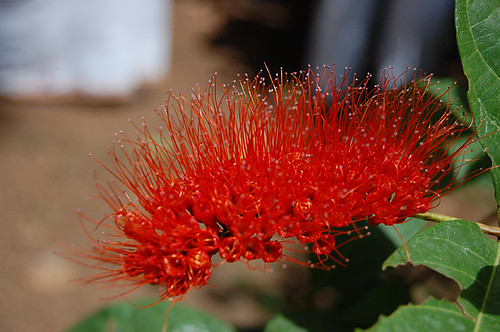The pictures we use in our articles might not show exactly what the words say. We choose these pictures to make you interested in reading more. The pictures work together with the words but don’t take their place. The words still tell you the important facts.
Plant roots are often overlooked, yet they play a crucial role in the growth and survival of plants. These underground structures anchor the plant, absorb water and nutrients from the soil, and even communicate with other organisms. Understanding the fascinating world of plant roots can deepen our appreciation for the complexity of the natural world. In this article, we will delve into 20 interesting facts about plant roots that will shed light on their remarkable abilities and functions. Whether you're a gardening enthusiast, a biology buff, or simply curious about the wonders of nature, these facts will offer a new perspective on the essential role that roots play in the lives of plants. So, let's unearth the captivating secrets of plant roots!
Plant Roots: The Unsung Heroes of the Plant Kingdom
Plant roots are a marvel of nature, playing a crucial role in the survival and growth of countless plant species. Let's explore 20 fascinating facts about plant roots that showcase their remarkable adaptations and functions.
Plant Roots Can Extend Far and Wide
- Beneath the soil, plant roots can spread out extensively, reaching lengths far greater than the height of the plant above ground.
- This extensive network allows plants to anchor themselves securely and absorb water and nutrients effectively.
- Roots are essential for the survival of most terrestrial plants, providing the anchor that keeps them firmly grounded and allowing them to access vital resources.
Some Plant Roots Have Specialized Functions
- Certain plant roots have evolved to serve specialized functions, such as support roots that provide structural stability to tall trees.
- Aerial roots enable plants like ivy and mangroves to cling to surfaces or respire in oxygen-deprived soils.
Plant Roots Interact with Soil Microorganisms
- Plant roots engage in intricate relationships with soil microorganisms, forming symbiotic associations with beneficial fungi and bacteria.
- These partnerships enhance nutrient uptake and contribute to overall plant health.
Roots Can Store Nutrients
- In addition to nutrient absorption, plant roots can act as storage organs, storing reserves of carbohydrates and other essential nutrients.
- These reserves sustain the plant during periods of dormancy or resource scarcity.
The Root Cap Protects Growing Tips
- At the tip of each root is a protective structure called the root cap, which shields the delicate meristematic cells responsible for root growth.
- This cap helps the root navigate through the soil, safeguarding its growing tip from abrasion and damage.
Roots Can Sense and Respond to the Environment
- Plant roots are adept at sensing and responding to environmental cues, adjusting their growth direction in response to gravity and moisture gradients.
- This optimization allows roots to explore the soil for resources effectively.
Some Roots Are Edible and Nutritious
- Certain plant roots, such as carrots, potatoes, and sweet potatoes, are not only edible but also rich sources of essential nutrients.
- These culinary staples have sustained human populations for centuries and continue to be integral to global food security.
Root Systems Vary Across Plant Species
- The structure and architecture of root systems vary widely among plant species, with some exhibiting taproots that delve deep into the soil.
- Others develop fibrous root systems that spread out horizontally.
Roots Aid in Soil Erosion Prevention
- The intricate network of plant roots plays a vital role in preventing soil erosion by binding soil particles together and stabilizing the earth.
- This reduces the risk of erosion caused by wind and water.
Plant Roots Release Chemical Signals
- Roots release chemical signals into the soil that communicate with neighboring plants and soil organisms, triggering responses that benefit the releasing plant.
- These signals can repel herbivores or recruit beneficial microorganisms.
Roots Can Influence Soil Structure
- The growth and decay of plant roots significantly impact soil structure and composition, contributing to the formation of soil aggregates and enhancing soil fertility.
- This process enhances water retention in the soil.
Some Roots Produce Medicinal Compounds
- Certain plant roots contain bioactive compounds with medicinal properties, such as ginseng root, which has been used in traditional medicine for its health benefits.
- This highlights the therapeutic potential of plant roots in medicine.
Adventitious Roots Enable Plant Propagation
- Adventitious roots facilitate vegetative propagation in numerous plant species, allowing plants to reproduce asexually and establish new individuals from stems or leaves.
- This natural mechanism promotes plant growth and reproduction.
Roots Play a Role in Carbon Sequestration
- Plant roots contribute to carbon sequestration in the soil, mitigating climate change by storing organic carbon and enhancing soil fertility.
- This process helps maintain a balanced carbon cycle in the environment.
The Age of a Tree Can Be Determined by its Roots
- Studying tree roots can provide insights into a tree's age and growth patterns by examining annual growth rings.
- Scientists can estimate the tree's age and understand its environmental history through root analysis.
Roots Can Adapt to Challenging Environments
- In environments with high salinity or low oxygen levels, plant roots exhibit remarkable adaptations to thrive under such challenging conditions.
- Specialized root structures and metabolic processes enable plants to survive in harsh habitats.
Plant Roots Support Diverse Ecosystems
- Healthy root systems provide habitats for a myriad of soil-dwelling organisms, fostering diverse ecosystems and contributing to terrestrial biodiversity.
- Roots play a crucial role in supporting the interconnected web of life in ecosystems.
Roots Have Inspired Engineering Innovations
- The resilience and efficiency of plant roots have inspired innovative engineering solutions, such as bio-inspired underground networks that mimic natural root systems.
- These solutions enhance soil stabilization and water management in urban landscapes.
Plant Roots: A Testament to Nature’s Ingenuity
The intricate and multifaceted nature of plant roots underscores the ingenuity of natural systems and their indispensable role in sustaining life on Earth. From nutrient acquisition to environmental interactions, the diverse functions and adaptations of plant roots continue to captivate scientists and enthusiasts alike, offering a profound appreciation for the hidden world beneath our feet.
In conclusion, the 20 interesting facts about plant roots shed light on the remarkable attributes and significance of these underground marvels, unveiling the captivating intricacies of nature's botanical wonders.
FAQs
Q: How do plant roots absorb water and nutrients?
A: Plant roots absorb water and nutrients through tiny root hairs, greatly increasing the surface area for absorption. This process is facilitated by osmosis and active transport mechanisms within the root cells.
Q: Can plants survive without roots?
A: Most plants cannot survive without roots, as roots provide stability, anchor the plant in the soil, and absorb essential water and nutrients necessary for growth and survival. However, some plants, such as certain aquatic plants, can survive for a period without roots under specific conditions.
Roots are truly remarkable, playing a vital role in plant growth and ecosystem health. For those intrigued by the wonders beneath our feet, consider exploring the nutritional benefits of shirataki rice or delving into the fascinating world of mycorrhizal fungi. Both topics offer unique insights into the intricate relationships between plants, fungi, and our own well-being.
Was this page helpful?
Our commitment to delivering trustworthy and engaging content is at the heart of what we do. Each fact on our site is contributed by real users like you, bringing a wealth of diverse insights and information. To ensure the highest standards of accuracy and reliability, our dedicated editors meticulously review each submission. This process guarantees that the facts we share are not only fascinating but also credible. Trust in our commitment to quality and authenticity as you explore and learn with us.






